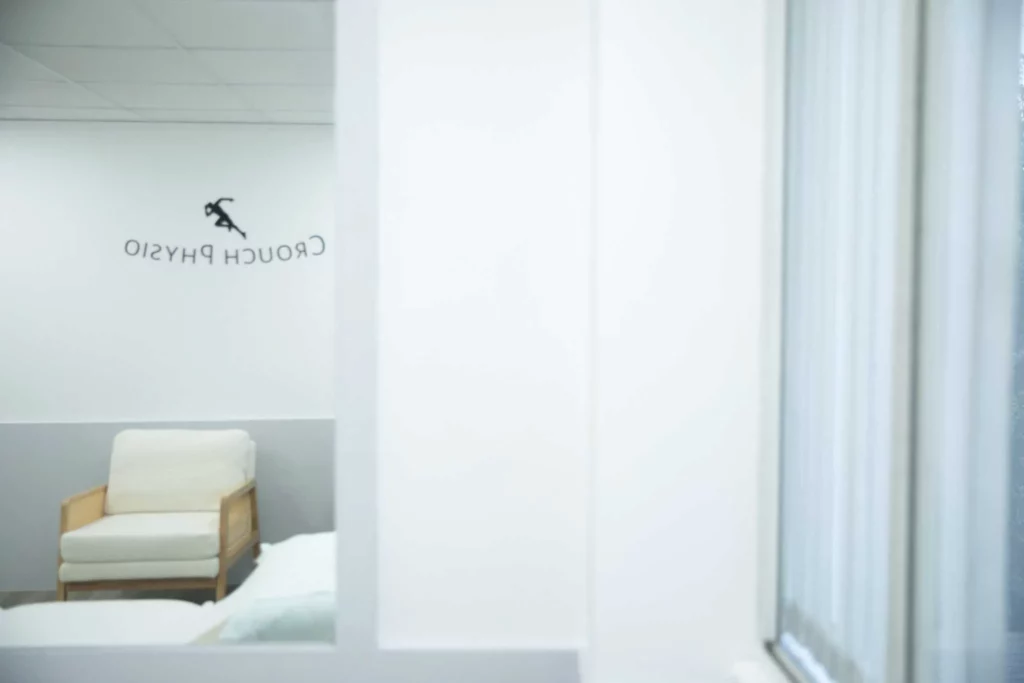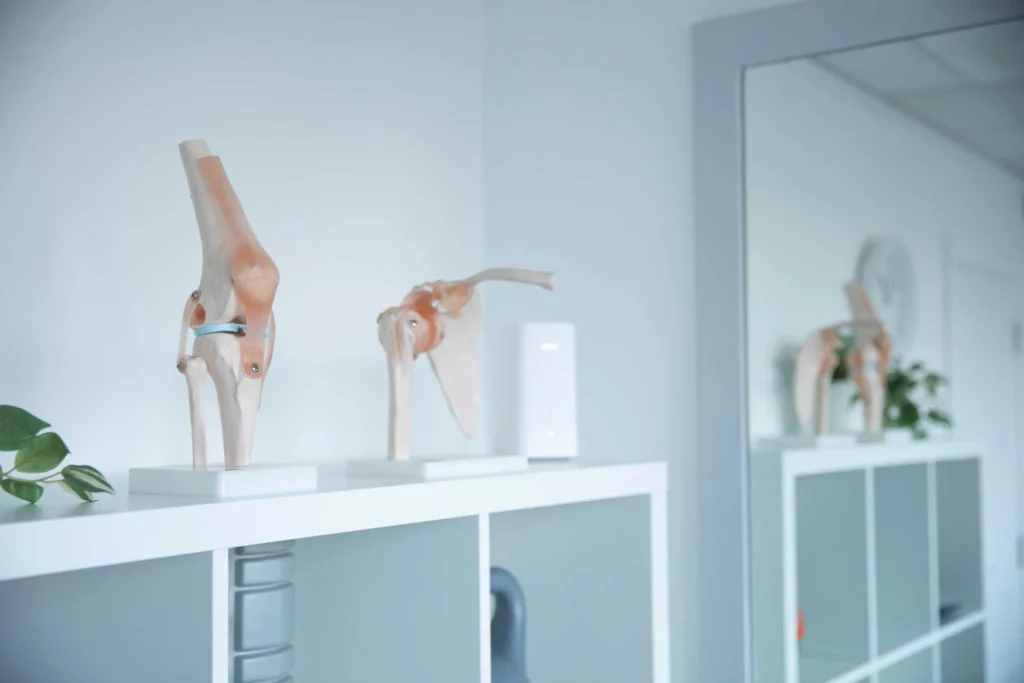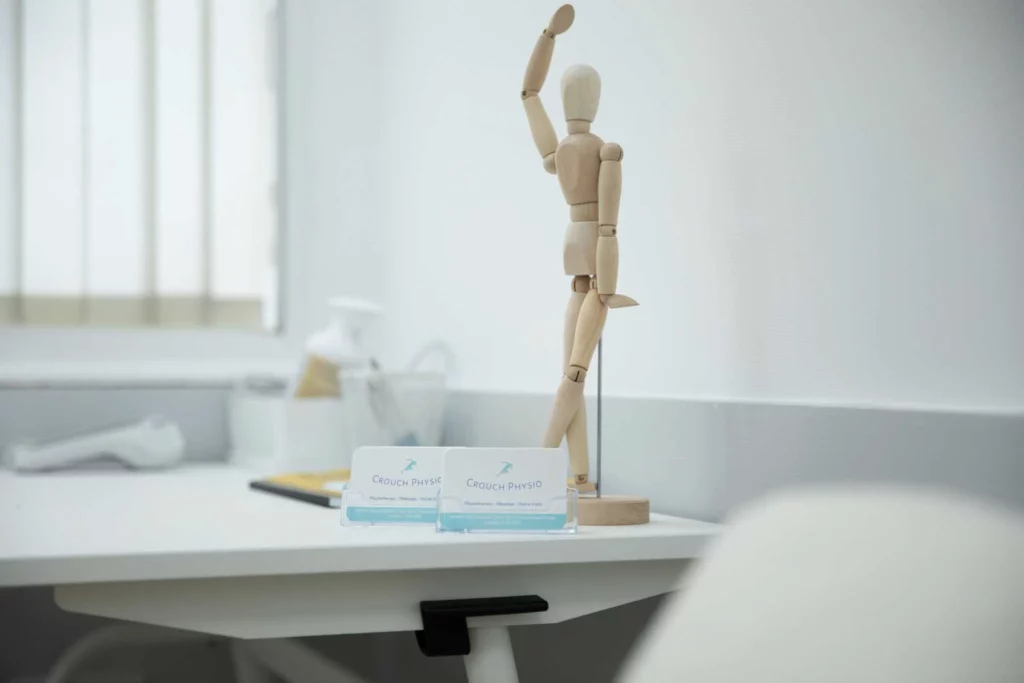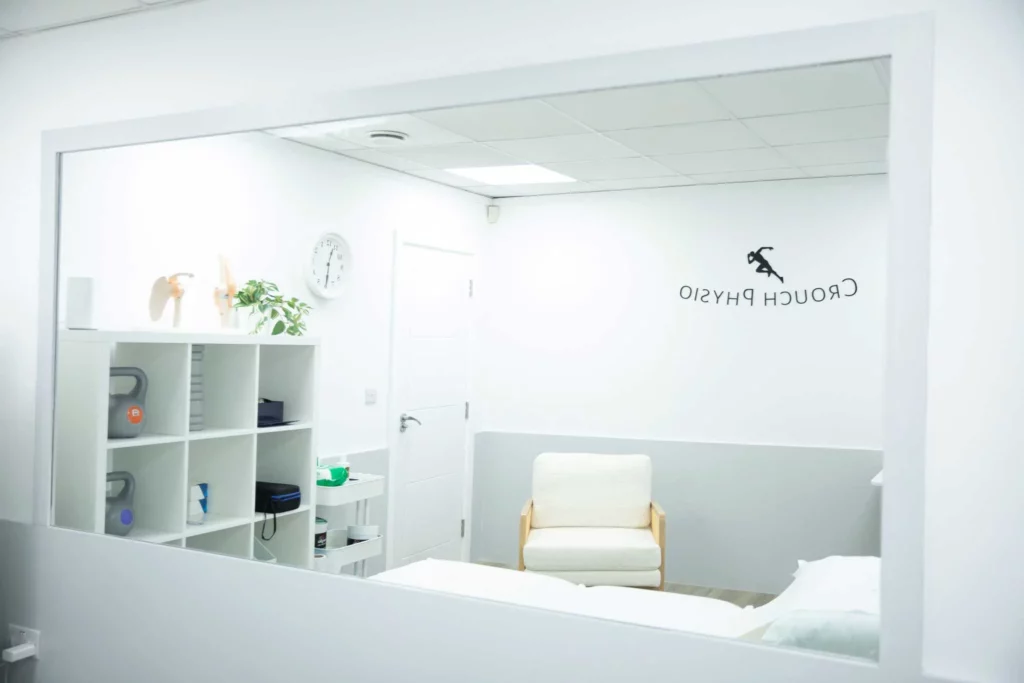As a physiotherapist, I see a lot of foot and ankle issues, but one of the most common (and often overlooked) conditions is Posterior Tibialis Tendon Dysfunction (PTTD). This sneaky little problem can cause pain, swelling, and even progressive flattening of the arch. If left untreated, it can lead to long-term issues like adult-acquired flatfoot and serious mobility problems.
What Is the Tibialis Posterior Tendon and Why Is It Important?
The tibialis posterior muscle sits deep in your calf and its tendon runs down behind the inner ankle before attaching to multiple bones in the foot. It’s a key player in supporting the arch and helping with foot stability when walking or running. When this tendon becomes inflamed or weak, things start to go wrong (1).
How Do You Know If It’s Posterior Tibialis Tendon Dysfunction?
If you’re experiencing pain or swelling along the inside of your ankle, especially when walking or standing for long periods, your tibialis posterior tendon might be struggling. Other signs include:
• A gradual flattening of your arch.
• Pain when rising onto your toes.
• Difficulty or weakness when inverting (turning in) your foot.
• Swelling along the inner ankle or lower shin.
• A feeling of instability or rolling inwards when walking.
Assessment – What Does a Physio Look For?
When assessing someone with suspected PTTD, I look for:
• Foot posture – Is there an obvious drop in the arch?
• Single-leg heel raise test – Can the person lift their heel off the ground while keeping the arch intact? (2)
• Pain on palpation – Is there tenderness along the tibialis posterior tendon?
• Strength testing – Is there weakness when resisting foot inversion?
• Gait analysis – Does the foot roll inward excessively when walking?
Treatment – How Can We Fix It?
The good news? If caught early, physiotherapy can make a huge difference!
Here’s how I usually approach treatment:
1. Reduce Pain & Inflammation
• Rest and activity modification (avoiding high-impact activities for a while).
• Ice therapy to control swelling.
• Supportive footwear and orthotics to offload the tendon (3).
• In some cases, taping or bracing for additional support.
2. Strengthening the Tibialis Posterior
Once the pain settles, we need to strengthen the tendon to restore function (4).
Some key exercises include:
• Toe scrunches – Strengthens foot intrinsics.
• Resistance band inversion exercises – Helps rebuild tendon strength.
• Calf raises (progressing to single leg) – A must for tibialis posterior rehab.
• Arch control exercises – Learning to activate the foot properly.
3. Addressing Biomechanics
• Checking if weakness in the hips or knees is contributing to excess foot pronation (5).
• Gait retraining if necessary.
• Ensuring proper footwear (sorry, but flimsy sandals and worn-out trainers won’t help!).
4. Gradual Return to Activity
Rehabbing PTTD isn’t an overnight fix. A structured plan to gradually return to walking, running, or sport is essential to prevent reinjury. I often use progressive loading exercises and recommend cross-training to avoid overloading the tendon.
Final Thoughts
Posterior Tibialis Tendon Dysfunction is one of those conditions that’s easy to ignore at first but can quickly become a major problem if left untreated. The key is early intervention – if you start noticing arch pain, instability, or swelling, don’t wait! A well-structured physiotherapy plan can help restore strength, function, and keep you moving pain-free.
If you suspect you have PTTD, reach out to a physio, your feet will thank you!
Our Barnet, Cockfosters & Enfield Physio’s have tons of experience and are specialists in dealing with PTTD. Have confidence that our specialist Physiotherapists will closely assess, diagnose & treat you in the correct & evidence-based way for all injuries. You can book an appointment here.
Blog By: Emre Oz (Musculoskeletal Physiotherapist at Crouch Physio).
References
- Guelfi, M., et al. “Anatomy, pathophysiology and classification of posterior tibial tendon dysfunction.” Eur Rev Med Pharmacol Sci 21.1 (2017): 13-19.
- Ross, Megan H., et al. “Clinical tests of tibialis posterior tendinopathy: Are they reliable, and how well are they reflected in structural changes on imaging?.” journal of orthopaedic & sports physical therapy 51.5 (2021): 253-260.
- Chicoine, Dominic, et al. “Biomechanical effects of three types of foot orthoses in individuals with posterior tibial tendon dysfunction.” Gait & Posture 83 (2021): 237-244.
- Ross, Megan H., et al. “Exercise for posterior tibial tendon dysfunction: a systematic review of randomised clinical trials and clinical guidelines.” BMJ open sport & exercise medicine 4.1 (2018): e000430.
- Wang, Junsig, et al. “Postural control differences between patients with posterior tibial tendon dysfunction and healthy people during gait.” International Journal of Environmental Research and Public Health 19.3 (2022): 1301.




